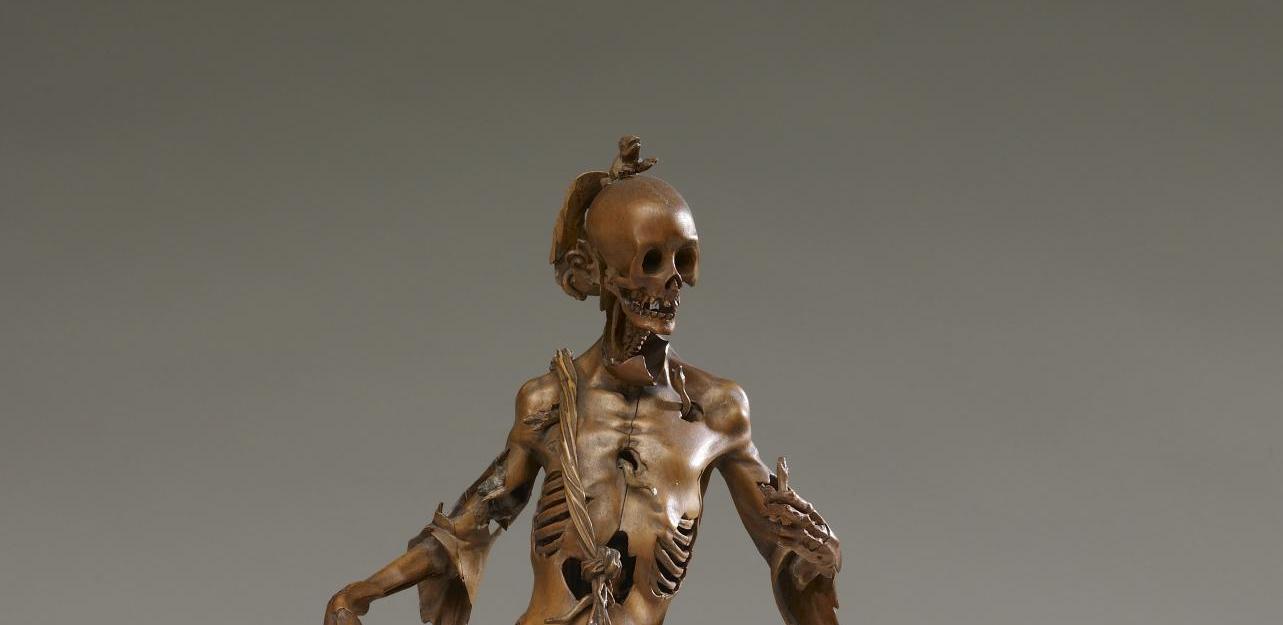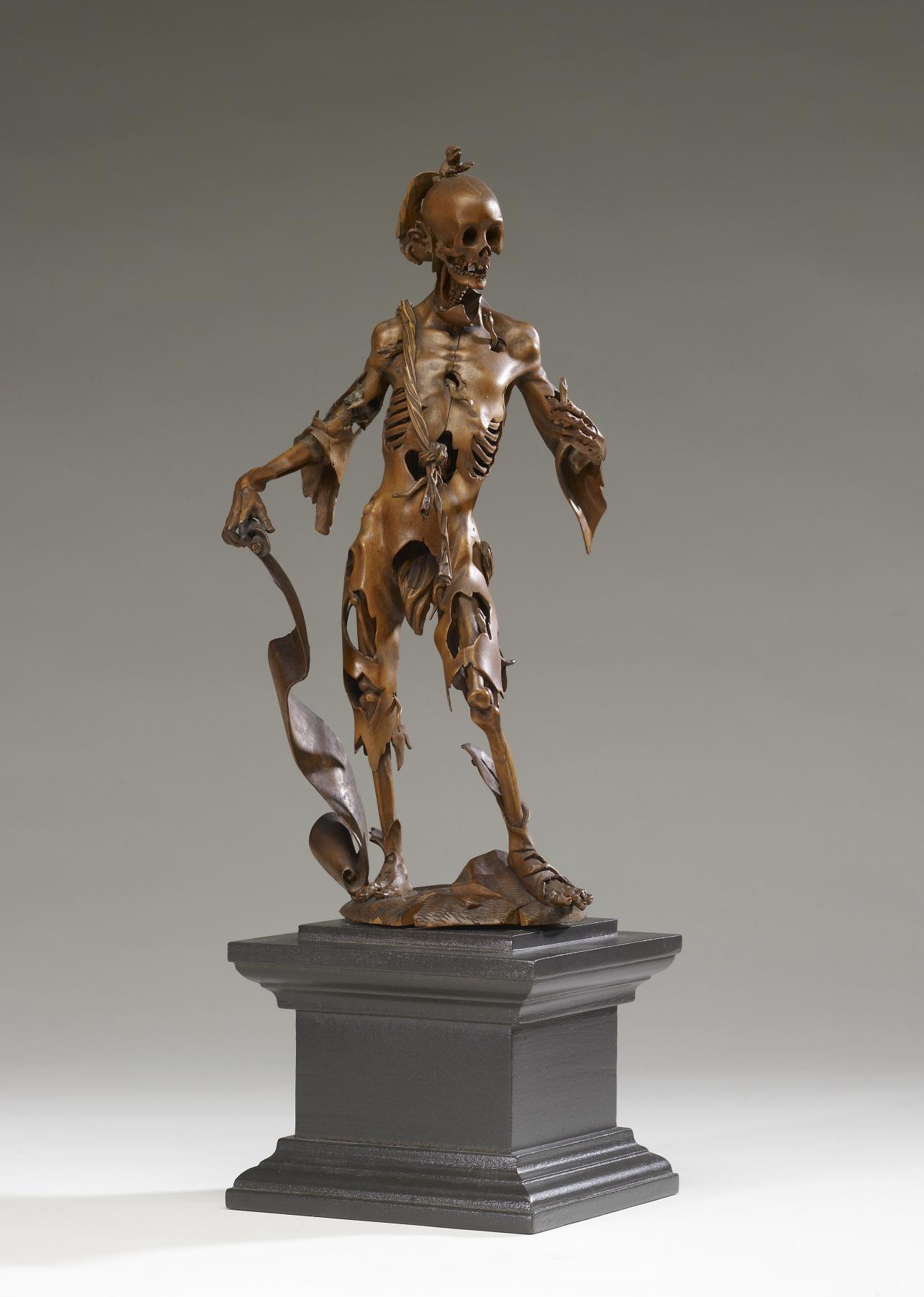Upon its creation, notes Joaneath Spicer, curator at the Walters, the work would have been purchased by an affluent or wealthy man to serve as a sober reminder of his inevitable death. The modern obsession with death and horror by some people, Spicer posits, is caused “in many ways because they’ve lost their fear of death.”
As a horror fan, this author can confirm that to be true. Even in a notoriously dangerous city such as Baltimore, the chances of being physically harmed are tiny compared to the physical dangers and maladies that befell people in Leinberger’s time. Thus, for modern viewers of his Memento Mori the sculpture is more entertaining than sobering.
Still, one pauses upon translating the Latin on his skeleton’s scroll: "I am what you will be, I was what you are."
Death may be delayed these days, but eventually, it comes for us all.
























![DEl Kathryn Barton [Australian b. 1972] the more than human love , 2025 Acrylic on French linen 78 3/4 x 137 3/4 inches 200 x 350 cm Framed dimensions: 79 7/8 x 139 inches 203 x 353 cm](/sites/default/files/styles/image_5_column/public/ab15211bartonthe-more-human-lovelg.jpg?itok=wW_Qrve3)



